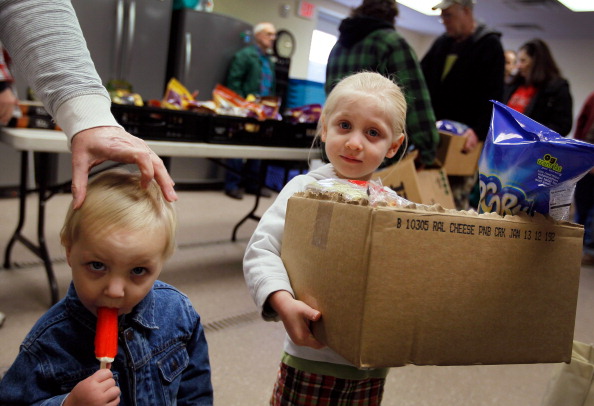Ang pinakamasama bagay na magagawa namin para sa mga taong nahihirapang pakainin ang kanilang pamilya ay ang gawing mas mahal ang pagkain.
Lahat tayo ay maaaring sumang-ayon sa, tama?
Dito sa Vermont, nearly one in every five children lives in a home that suffers from “food insecurity,” according to the KIDS COUNT Data Center, a project of the Annie E. Casey Foundation. The figure is even higher where I live, on a dairy farm close to the border with Canada in Orleans County
If food prices go up, these stressed families will hurt the most.
That’s why I’m so puzzled by proposals to require cautionary labels on food with genetically modified ingredients—but also hopeful that Congress will provide the leadership we need to keep grocery-store prices in check.
The problem erupted in my state two years ago, when our governor signed legislation that mandates GMO warning labels. The law takes effect in July.
Other states have rejected these laws. Voters in California, Colorado, Oregon, and Washington have turned down ballot measures to require GMO labels. When they learned about why GMO labeling makes no sense, they rebuffed these so-called right-to-know laws and just said no.
Sa unang sulyap, GMO labeling doesn’t sound like a big deal. Yet it involves a lot more than slapping statements in fine print on packages of food. It will force food companies to reformulate their products, driving up the cost of production all the way back to the farm gate. Prices will jump and consumers will pay the difference.
Some estimates have suggested that mandatory GMO labels will push the ordinary American grocery bill over $400 sa $500 per year in additional food costs. A new report from the Corn Refiners Association says the amount may even exceed $1,000 per year.
Whatever the precise costs—I’ll let the number crunchers debate amongst themselves—this is a big burden for everyone, and especially for the thousands of people who live in Vermont’s food-insecure homes. Some of them are my neighbors. Their kids go to school with my kids. They’re already having trouble putting food on the table. Let’s not make it harder.
The elitists who insist on mandatory labels either fail to understand the economic consequences of their proposals—or they don’t care, perhaps because they’re wealthy enough to absorb the new costs
This campaign to stigmatize GMOs makes no sense. Sa nakaraang dalawang dekada, GMOs have become a part of conventional agriculture, allowing us to grow more food on less land in a more sustainable way. They are perfectly compatible with human health, as every scientific and regulatory agency that has studied them has proclaimed, from the American Medical Association to the World Health Organization.
Just last month, the American Society of Plant Biologists issued a resounding endorsement of GMOs, hailing them as “an effective tool for advancing food security and reducing the negative environmental impacts of agriculture.”
Yet the professional protestors still demand labels, without regard to how it flies in the face of scientific consensus—or what it means for the budgets of ordinary people. They tout a “right-to-know” via a label when the reality is you already have the right to know: a label does not give a right nor does the lack of one take a right away. Besides, given the level of attention that biotech crops have received over the past few years, there are more and more resources available for those who want to execute their right to know.
The shame of this dispute is that it’s unnecessary. People who want to avoid food with GMO ingredients, for whatever reason, already have that power. They can purchase organic food, which may not contain GMOs. They also can look for non-organic products that market themselves as Non-GMO.
With Vermont’s labeling law on the horizon, Gayunman, we face the vexing possibility of a patchwork of regulations in which 50 states come up with 50 different standards for labeling food. Instead of an efficient system that promotes public health, kaligtasan ng pagkain, environmental protection and commerce of our most basic need, we’ll confront a confusing and costly mess.
Secretary of Agriculture Tom Vilsack has called for federal legislation “so that we avoid any potential chaos that occurs when one state decides to go one way, different states do a different thing, and then companies decide for themselves. We just can’t have that.”
A bipartisan majority in the House of Representatives already has passed the Safe and Accurate Food Labeling Act, which promises to stop this worst-case scenario from becoming a reality. This week a bipartisan majority of the Senate Agriculture Committee voted to move forward a similar bill that would establish national standards for food made with genetically modified ingredients to the full Senate.
As the senators deliberate, let’s hope they remember the neediest among us by rejecting pointless labels and needlessly adding costs to a safe, diverse food supply.


